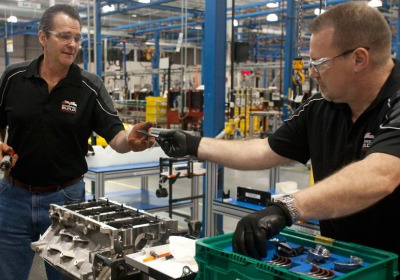GM builds 100-millionth small-block engine
Tue, 29 Nov 2011
General Motors will build its 100-millionth small-block engine on Tuesday, marking a milestone for the company. Engine No. 100 million is headed for GM's historic collection.
Chevrolet introduced the small-block engine in 1955. Since then, it has been used all over the world to power everything from passenger cars to boats to industrial machines. Currently Chevy, Cadillac and GMC use it in the United States while Vauxhall and Holden use it overseas.
The small-block program began in the years after World War II, when chief engineer Ed Cole transferred from Cadillac to Chevrolet. Cole retained the design of the company's Stovebolt engine while decreasing weight and adding power. It was a better way to build engines, according to Chevy, that took advantage of streamlined production techniques.
"The small-block is the engine that brought high-performance to the people," said David Cole, founder and emeritus chairman of Center for Automotive Research, and Ed Cole's son. "There is an elegant simplicity in its design that made it instantly great when new and enables it to thrive almost six decades later."
Chevy installed mechanical fuel injection starting in 1957 but discontinued the feature in the mid-'60s. In the 1980s, electronically fuel-injected engines debuted, including the famous 1985 Tuned Port Injection unit, some of which are still used today.
The pinnacle of the current generation of small-blocks resides in the friendly confines of the Corvette ZR1's engine bay. It produces 638 hp and 604 lb-ft of torque. That's a long way from its first application, when the engine delivered just 195 hp.
For the next generation of the small-block, GM has invested more than $1 billion in manufacturing facilities. The fifth-generation engine will feature direct injection to improve fuel economy but will still have 4.4-inch bore centers, a hallmark of the small-block engine.
By Jake Lingeman

